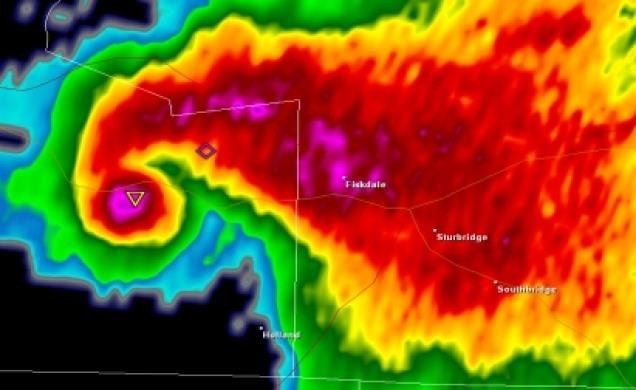-
Posts
77,918 -
Joined
-
Last visited
Content Type
Profiles
Blogs
Forums
American Weather
Media Demo
Store
Gallery
Everything posted by weatherwiz
-
I remember that b/c it was HORRIFIC. It kinda of fizzled out by the time it got here, but we had a severe weather outbreak on December 1, 2006 and there was a moderate risk that just got into Connecticut. but I think that January (or even early February) saw 60's in parts of SNE and 70's into NYC. We finally got some snow later in February and I think March. We got royally screwed with the SWFE too on Valentine's Day (Please Tip we don't need to hear the love story again). It was like 14F and sleet in West Hartford with only a few inches of snow. NNE got destroyed.
-
Wasn't it in like 2006?
-
IMO, anytime you start seeing flip-flops or even pattern change "delays" on ensemble guidance looking medium-to-long term that screams pattern change, especially when some of the run-to-run changes are rather volatile. I guess this ties into the Pacific discussion, but lately we've seen a pattern across Asia and the western Pacific dominated by wave breaking...there are the signals that we could see the jet become a bit more zonal across Asia with jet extension across the northern Pacific...this is what will help better the PAC and increase potential for amplifying troughs across the East.
-
If there is anything to take away from the GFS (even the Euro) it's there are some pretty potent shortwaves that will be diving south within the Arctic jet. There is going to be potential for some pretty significant weather systems with the STJ (which is strong as well) hanging around to the south. Any interactions and there's going to be some significant weather systems.
-
That's the problem...there are so many freaking shortwaves good luck getting any type of run-to-run or model-to-model consistency until probably a few days out (if that). We saw that last winter too. This leads to [INSERT MODEL NAME] sucks posts when in reality it's way more complex then the models sucking.
-
January could really be fun. I am totally fine with a hostile PAC right now and hostile as in potential to change. Unlike some of the past winters where the PAC screwed us, there aren't many signals that the PAC pattern is going to remain stagnant. If it was a signal where the PAC will be in a somewhat steady state...well that would raise some concerns, but there is alot of hostility indicating we'll see changes within the PAC. This certainly doesn't guarantee we get nailed, but it's what you want to see.
-
Sometimes its hard to follow what's going on. It's December 6. We aren't even close to peak climo in terms of temperature or snowfall. The pattern looks to favor blocking potential for quite a while...there would have to be a substantial, massive disruption to erode this signal. It's also very unlikely the PAC remains this hostile. The PAC will relax...now does that mean once it relaxes it won't become hostile again, no.
-
I will be there
-
End of the week certainly is a bit intriguing (only b/c something is being shown) but there are a ton of features at play. First, any shortwave that emerges could easily get sheared out then you have also the HP sliding north of it and this feature in SE Canada which could be a pivotal piece
-
I am a big fan of the WSSI.
-
Why are people having meltdowns? I'm confused. Do people think a storm has to be on a model at D10 and then expect the storm to hold on each subsequent run? Most of out storms don't even really become evident on the SLP graphics until like 4-5 days out. I think some need to keep in mind that while everything looks great in terms of pattern evolution we're still dealing with a pretty fast flow aloft. Those fast flows are a mess for guidance, especially when there are so many moving pieces (shortwaves). We're not going to see a scenario where models have a cyclogenesis bomb moving up the coast at D10 and having that be a consistent run-to-run solution.
-
Digging out of 1888
-
Not sure why the hostility after 12z. I mean nothing really seems unchanged...but there certainly could be some airmass concerns as as been stated with the lack of cross-polar flow. As long as we don't have a crazy garbage preceding airmass we don't need a -20C 850mb airmass either.
-
I wonder if this is driven by the lack of data points within the Pacific (especially northern Pacific). We can upgrade models and resolutions and physics all we want but if you're still lacking the quality data to ingest it doesn't really matter. Now...not sure what you can really do given its a giant body of water but it sucks nonetheless.
-
Spread and run-to-run variations should be expected and will happen. Obviously for many reasons, but perhaps one driving factor in that is the spread within the PNA. That's a pretty sizable spread and (especially when considering structure) could have substantial impacts overall.
-
I guess one thing I would really like to see become better established on guidance is a better configuration of the height anomalies in the EPO/PNA region and have the ridge axis oriented more S-N into the Gulf of Alaska. You sort of have that look in the medium-range (on the 6z GEFS) but the stout SE ridge and the ridging from the PNA ridge gets pinched off within the West. But getting a configuration would help substantially with establishing a cross polar flow.
-
Not sure about retrograding back into NS like that but we have see blocks positioned like that. Actually there are some -NAO's where the core of the anomalies extends so far south that parts of NNE actually feature above-average temps during those periods
-
Tempting but I think my girlfriend would send me packing
-
Too bad Only Fans wasn't around 10-12 years ago...I could have been rich.
-
I know when the PV is very strong and it can increasingly hard to disrupt and tear apart and that's why some winters when we're dealing with strong PV's early on it can take literally an entire winter to weaken, but does the same hold true when you establish strong blocks early on? that it's very difficult to break down the block through the season?
-
I'm kinda pumped/pissed at the same time. that thread I started late summer was actually driven by the potential for this type of scenario to occur (big blocking) and while the initial focus on the thread was ENSO one of my ultimate goals was to get into hemispheric evolutions during the fall prior to big block periods. But what I'm pissed at is things got hectic the past few months and all my work has stalled I haven't been following in-depth month discussion about the winter (from some of the threads here and bigger gurus on Twitter) but was there a strong signal or discussion for this to occur as far back as a month or two ago?
-
I don't disagree with that but I'm talking more about research aspect as opposed to a overview/review. what I'm referring too I think can enhance accuracy potential in an overview but obviously you wouldn't get into those details during an overview.
-
I've said this so many times but I wish I was smart enough to take the daily data that is provided and create weekly and bi-weekly averages and running means. The easiest thing would be to just take the sum of daily's for 7-day and 14-day periods and divide but that won't work. For example, if you take the daily values for a month and divide by the # of days in that month, you don't get the value what would be listed for the monthyl value.
-
I agree...I wish there was too and I would think there is something or if not, someone is doing something. I know the KU books really get into assessing how these indices evolve leading up to the storm and I think even post-storm. That's really the key...it's the evolution of these things leading up to the storm. That's why I'm not a huge fan of looking at these indicies on a static level or a monthly averaged value. What the NAO does in a 3-7 day span is more important then it's averaged-state over a month.
-
Well I mean I don't totally think there isn't value looking at a numerical value. But you want to keep in mind that if you're comparing say A December 2021 value that was -3.3SD to other December's that were -3SD the structure of the NAO block could be totally different across each month and the pattern may not be entirely similar too.







